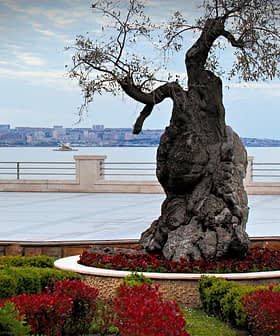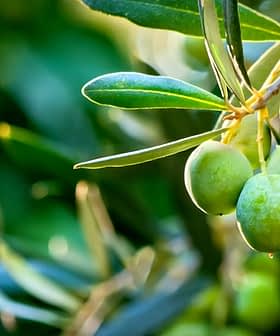Calling the development of the American market a “top priority” for the International Olive Council, Director Jean-Louis Barjol was in Washington Monday for the NASFT Fancy Food Show and to kick off a new $1.7 million promotion campaign under the slogan “Add Some Life.”

After a ten-year absence the intergovernmental organization is back at work in the world’s biggest market, where even an incremental uptick in Americans’ meager per capita consumption would amount to a boon for olive oil producers everywhere.
It won’t be an easy task. American consumers are confused by mixed marketing messages and reports critical of the quality of olive oils found on some supermarket shelves.
The campaign’s launch signals the start of an initiative that could extend beyond its initial 18-month term, the director stated.
When asked about the small budget, around $100,000 per month through 2012, Barjol stressed that the success of the campaign would depend on “synergy.”
“I am here to tell (producers and marketers) of olive oil and table olives ‘hey guys, we are going to launch a campaign. It’s up to you to make it more visible, up to you to add events with your own money around this event,’ ” he said.
Barjol said earlier that he hoped to soon welcome the United States and Australia into the council as members, as he recently welcomed Argentina. During this visit, his second to the U.S. since his term began in January, Barjol met with Patricia Darragh from the California Olive Oil Council, an executive from California Olive Ranch, and “high-ranking people from the USDA and FDA to have a debate on that,” he said.
Barjol added that the decision whether or not to join the IOC was a “government issue” that involves producers and, more importantly he said, consumers of olive oil. With U.S. domestic production of olive oil amounting to just 6,000 tons and consumption of 260,000 tons, he said, the U.S. government agencies will do what is in the best interest of consumers first and foremost. Barjol believes that would mean a decision to join the ranks of IOC member countries which together produce 98 percent of the world’s olive oil. “As regulatory agencies, the FDA, USDA and IOC speak the same language,” he noted.
Meanwhile, the Italian Trade Commission, which boasted by far the biggest cluster of booths at the huge specialty food trade fair being held here, organized an olive oil tasting to highlight some of what speakers called the unequaled variety of Italy’s 350 cultivars.
Yet it wasn’t the native Leccino or Frantoio varieties in the spotlight in the Colavita booth. Instead, the big Italian brand was showing customers its newest selections of olive oils from California and Australia.
Sensing a visitor’s surprise by the idea of shipping California olive oil in bulk to Colavita’s bottling facility near Rome, only to be returned perhaps to supermarkets in California, a company spokesperson noted Colavita’s market presence in 80 countries as if to say, “what’s moving a little more olive oil here or there?”








